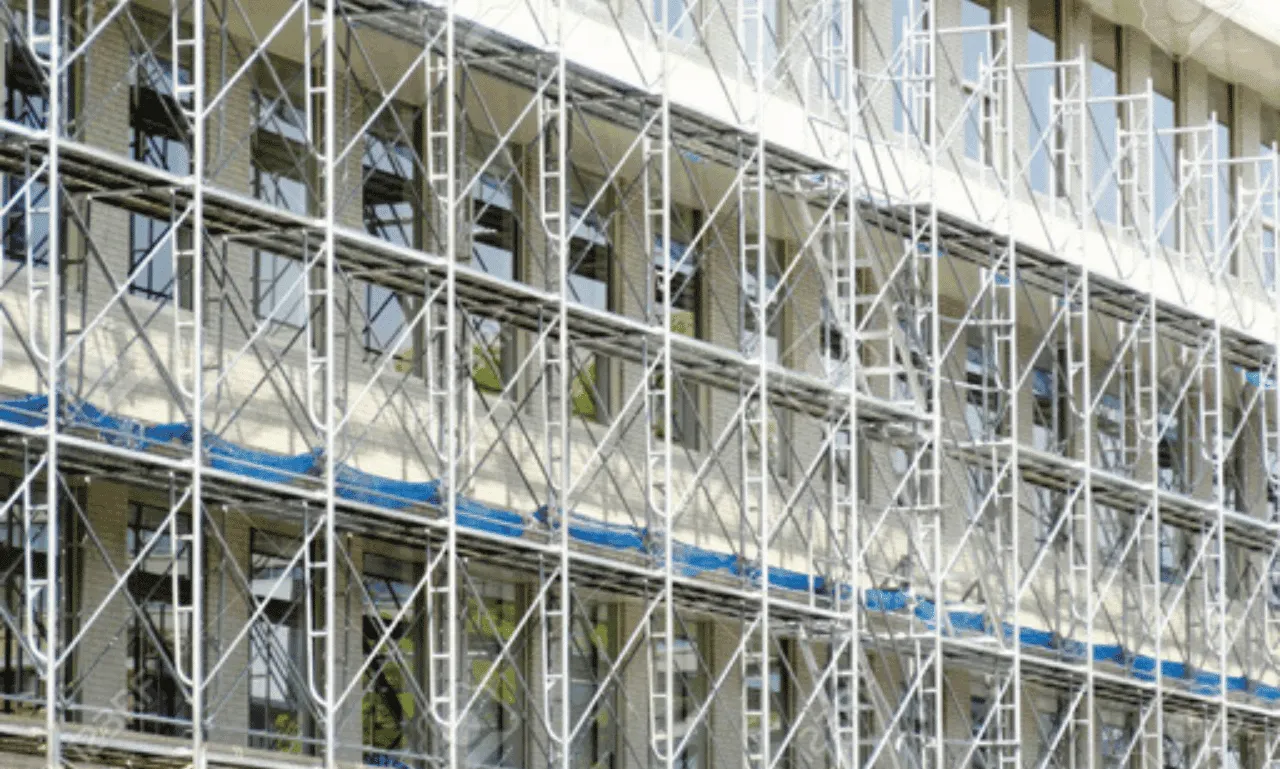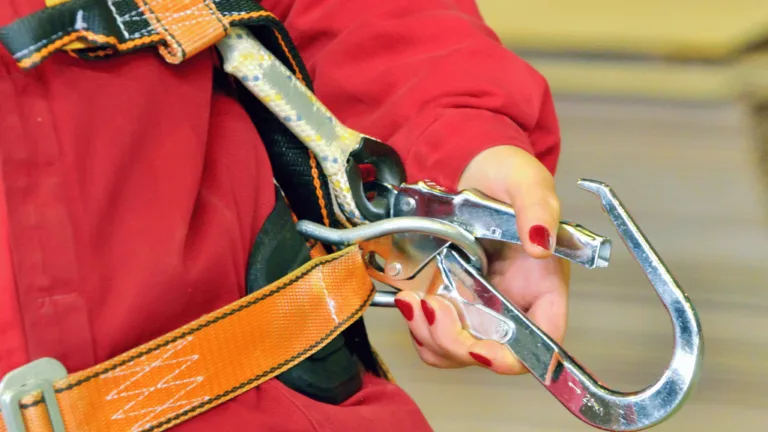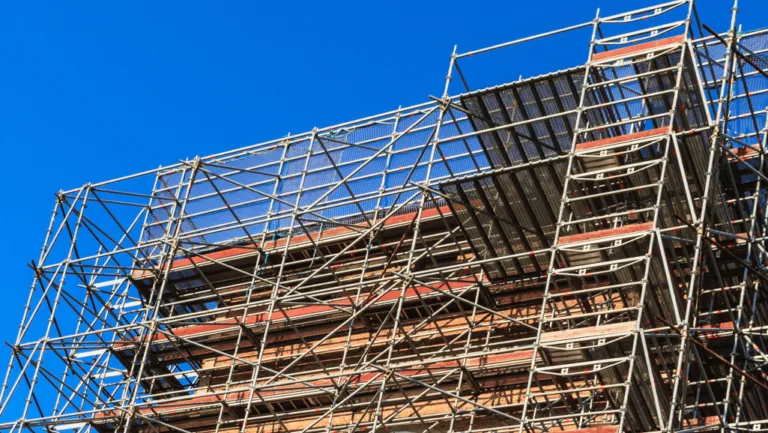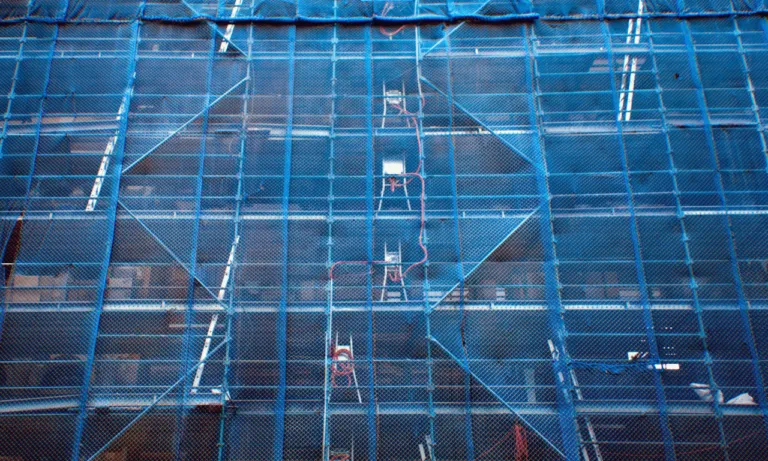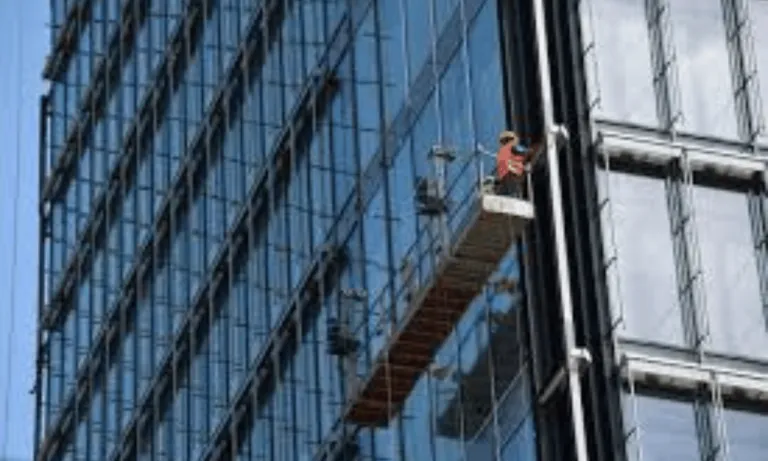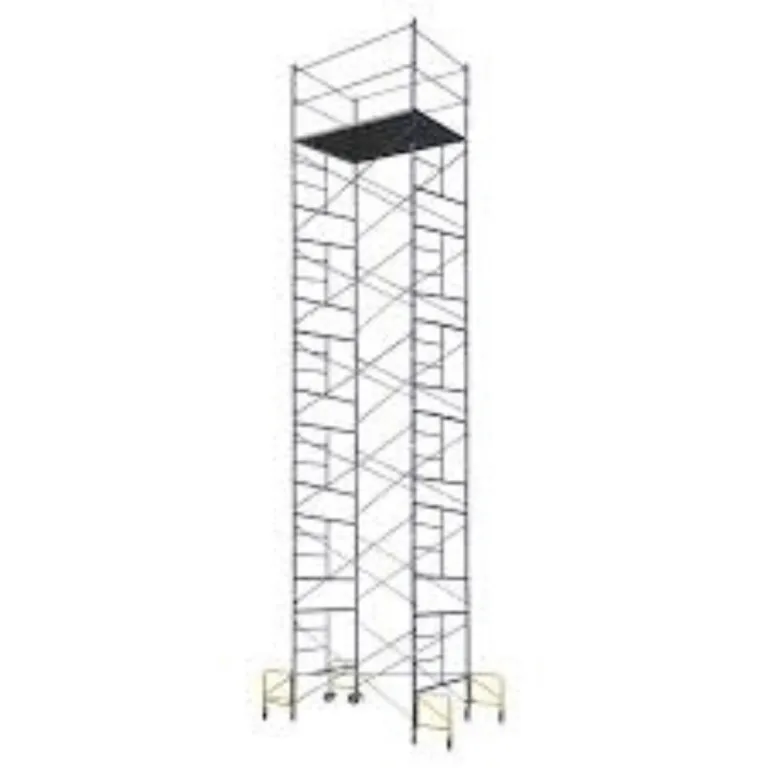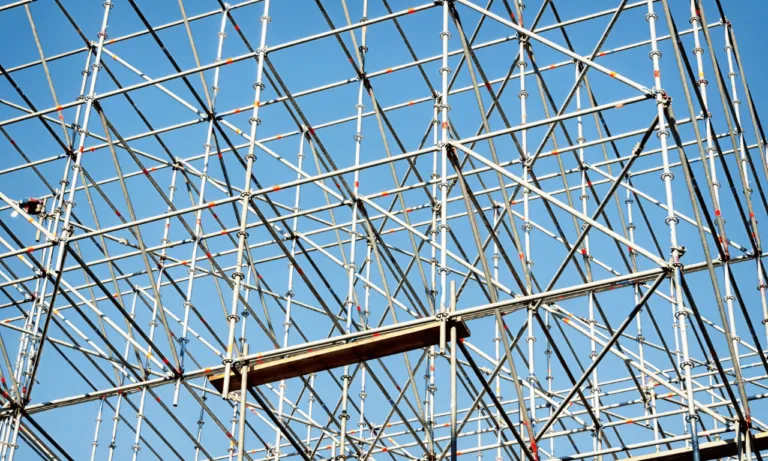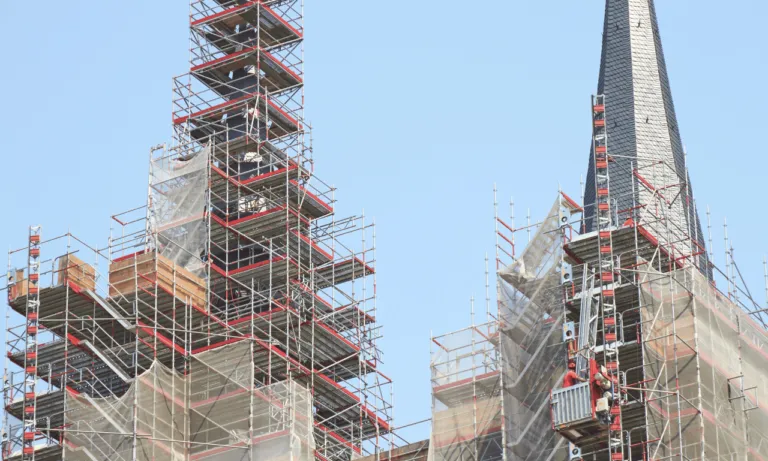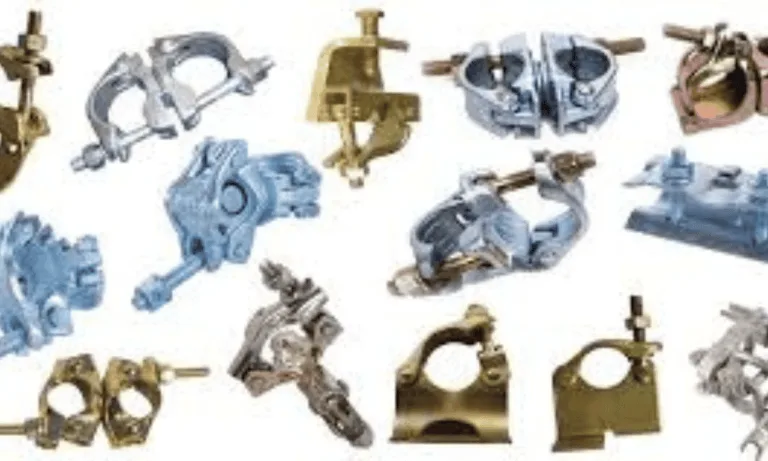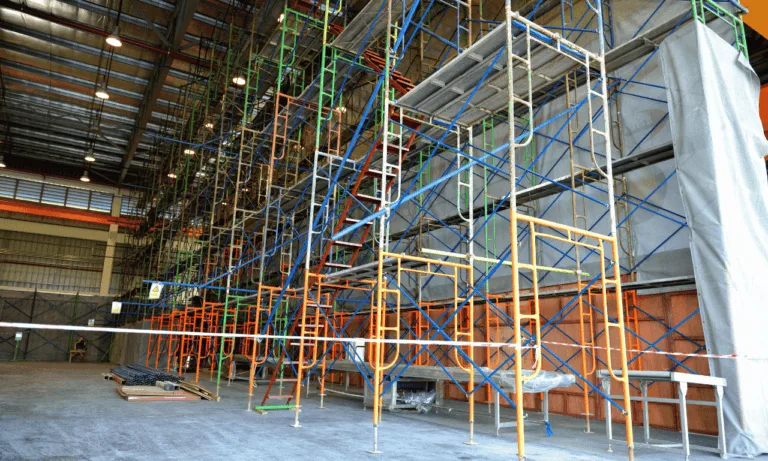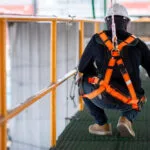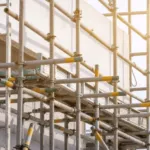Phone:
(+65)8319-0742
Demolition work is a hazardous task, and ensuring the safety of workers is crucial. Scaffolding plays a key role in providing a safe and stable working platform for demolition operations.
There are different types of scaffolds used in demolition work, including supported, suspended, rolling, cantilever, steel, H-frame, and trestle scaffolding. Each type is suitable for specific demolition tasks, considering factors such as access requirements and the building’s design. It is important to choose the right type of scaffold for the job and follow the manufacturer’s instructions for safe use and maintenance.
Key Takeaways:
- Ensure worker protection and secure operations on the construction site with proper demolition scaffolding safety measures.
- Choose the appropriate type of scaffold for the specific demolition task and follow manufacturer instructions for safe use and maintenance.
- Understand the different types of scaffolding available, including supported, suspended, rolling, cantilever, steel, H-frame, and trestle scaffolding.
- Familiarize yourself with the components of demolition scaffolds, such as standards, ledgers, braces, platforms, and guardrails.
- Comply with safety requirements and regulations, including proper design and construction, regular inspections and maintenance, and training and supervision.
Types of Scaffolds for Demolition Work
When it comes to demolition work, having the right type of scaffold is essential for ensuring worker safety and efficiency. There are several types of scaffolds commonly used in demolition projects, each with its own unique features and advantages.
Supported Scaffolds
Supported scaffolds are the most common type used in demolition work. They consist of a series of platforms supported by vertical posts, also known as standards, that are firmly placed on the ground or other sturdy surfaces. These scaffolds are versatile and can be easily adjusted to access different levels of a building. Supported scaffolds provide a stable working platform, making them suitable for various demolition tasks.
Suspended Scaffolds
Suspended scaffolds are excellent for accessing hard-to-reach areas during demolition work. These scaffolds are hanging platforms that are suspended from ropes or cables attached to an overhead structure, such as a roof or beam. Suspended scaffolds allow workers to work at different heights and maneuver around obstacles with ease.
Rolling Scaffolds
Rolling scaffolds are designed with platforms that are supported by wheels or casters, allowing them to be easily moved from one location to another. These scaffolds are particularly useful in demolition projects where frequent repositioning is required. The mobility of rolling scaffolds ensures efficient workflow and saves time and effort during the demolition process.
Cantilever Scaffolding
When floor space is limited, cantilever scaffolding provides a practical solution for demolition work. This type of scaffold is built with platforms that extend beyond the supporting structure, allowing workers to access areas that would otherwise be difficult to reach. Cantilever scaffolding maximizes space utilization and facilitates safe and effective demolition operations.
Steel Scaffolding
Steel scaffolding is known for its durability and strength, making it suitable for heavy-duty demolition projects. This type of scaffold is constructed using steel tubes and couplers, providing a robust and reliable structure for workers. Steel scaffolding can withstand heavy loads and adverse weather conditions, ensuring a safe working environment during demanding demolition tasks.
H-Frame Scaffolding
H-frame scaffolding is a lightweight and portable option commonly used in demolition work. It consists of vertical H-shaped frames and horizontal braces, forming a stable structure for workers. H-frame scaffolding is quick and easy to assemble and disassemble, making it ideal for small-scale demolition projects that require frequent relocation of scaffolds.
Trestle Scaffolding
Trestle scaffolding is often utilized for low-level demolition work. It consists of tripods or A-frame supports with platforms placed at various heights. Trestle scaffolding provides a safe working platform for tasks close to the ground, such as removing debris or carrying out minor demolitions. Its simplicity and versatility make it a cost-effective choice for small-scale demolition projects.
Choosing the right type of scaffold is crucial for the success and safety of demolition work. Each type of scaffold offers unique benefits depending on the specific requirements of the project. By selecting the appropriate scaffold, workers can execute demolition tasks efficiently and minimize risks.
Components of Demolition Scaffolds
Demolition scaffolding is a complex structure that relies on various components working together to create a safe and stable working platform. Each component serves a crucial role in ensuring the overall integrity and safety of the scaffold. Let’s take a closer look at the essential components:
Standards
The standards are vertical members that provide support to the scaffold and transfer its weight to the ground or a lower level. They are responsible for maintaining the stability and load-bearing capacity of the scaffold. Standards need to be carefully installed and positioned according to the manufacturer’s guidelines to ensure proper weight distribution.
Ledgers
Ledgers are horizontal members that connect the standards and provide lateral stability to the scaffold. They play a vital role in distributing the load evenly across the scaffold, preventing any potential imbalance or leaning. Proper alignment and secure attachment of the ledgers are essential for ensuring the scaffold’s stability and strength.
Braces
Braces are diagonal members that add additional stability and strength to the scaffold structure. They work in conjunction with the standards and ledgers to resist lateral forces and prevent sway or collapse. Braces provide crucial reinforcement, particularly for taller scaffolds or those subjected to external forces like strong winds or vibrations.
Platforms
Platforms are the designated working surfaces where workers stand and carry out their tasks. These platforms should be securely attached to the scaffold structure and provide a stable and slip-resistant surface. Regular inspections and maintenance are necessary to ensure the platforms remain in good condition, free from any defects or damage.
Guardrails
Guardrails are the protective barriers installed along the edges of the scaffold platforms. They consist of top rails, mid rails, and toeboards, providing fall protection and ensuring worker safety. Guardrails must be properly installed and meet the required height and strength standards to prevent falls from height and protect workers from potential hazards.
Here is a visual representation of how these components work together to form a demolition scaffold:
| Component | Description |
|---|---|
| Standards | Vertical members that support the scaffold’s weight and transfer it to the ground or a lower level. |
| Ledgers | Horizontal members that connect the standards and provide lateral stability to the scaffold. |
| Braces | Diagonal members that offer additional stability and strength to the scaffold structure. |
| Platforms | Designated working surfaces where workers stand and perform their tasks. |
| Guardrails | Protective barriers installed along the edges of the scaffold platforms to prevent falls. |
By understanding the importance of each component and ensuring they are in good condition and properly installed, you can create a strong and secure demolition scaffold that prioritizes worker safety.
Safety Requirements and Regulations for Demolition Scaffolds
When it comes to demolition scaffolds, ensuring safety is of paramount importance. Compliance with safety requirements and regulations is vital to protect both workers and the public. Several key aspects need to be considered to maintain a safe working environment.
Design and Construction
The design and construction of demolition scaffolds play a crucial role in ensuring their safety. Factors such as the nature of the demolition work, building design, load capacity, and access requirements must be taken into account. By adhering to proper design and construction guidelines, scaffolds can be built to withstand the demands of the demolition process.
Inspection and Maintenance
Regular inspections and maintenance are essential to keep demolition scaffolds in optimal condition. Qualified individuals should conduct thorough inspections to identify any potential defects or hazards. By addressing issues promptly and conducting necessary repairs, scaffolds can be maintained in a safe and functional state.
Training and Supervision
Proper training and supervision are critical elements of ensuring the safety of workers on demolition scaffolds. Workers should receive comprehensive training on safe erection, dismantling, and use of scaffolds. Additionally, supervision is necessary to ensure that workers follow proper safety protocols and guidelines, minimizing the risk of accidents.
Fall Protection
Fall protection is a crucial aspect of demolishing scaffolds. Workers operating at heights must use appropriate fall protection equipment, such as harnesses and lanyards, to prevent falls and injuries. By implementing effective fall protection measures, the risk of accidents during demolition work can be significantly reduced.
| Safety Requirement | Importance |
|---|---|
| Scaffold Safety Requirements | To comply with safety standards and regulations |
| Safety Regulations | To ensure adherence to legal requirements for worker safety |
| Design and Construction | To create scaffolds that can withstand the demands of demolition work |
| Inspection and Maintenance | To identify and address any defects or hazards |
| Training and Supervision | To ensure workers have the necessary skills and follow safety guidelines |
| Fall Protection | To prevent falls and injuries when working at heights |
By adhering to scaffold safety requirements, regulations, and implementing design considerations, regular inspections, proper training and supervision, and effective fall protection measures, demolition scaffolds can provide a secure and safe working environment for workers.
Proper Safety Equipment for Demolition Scaffolding
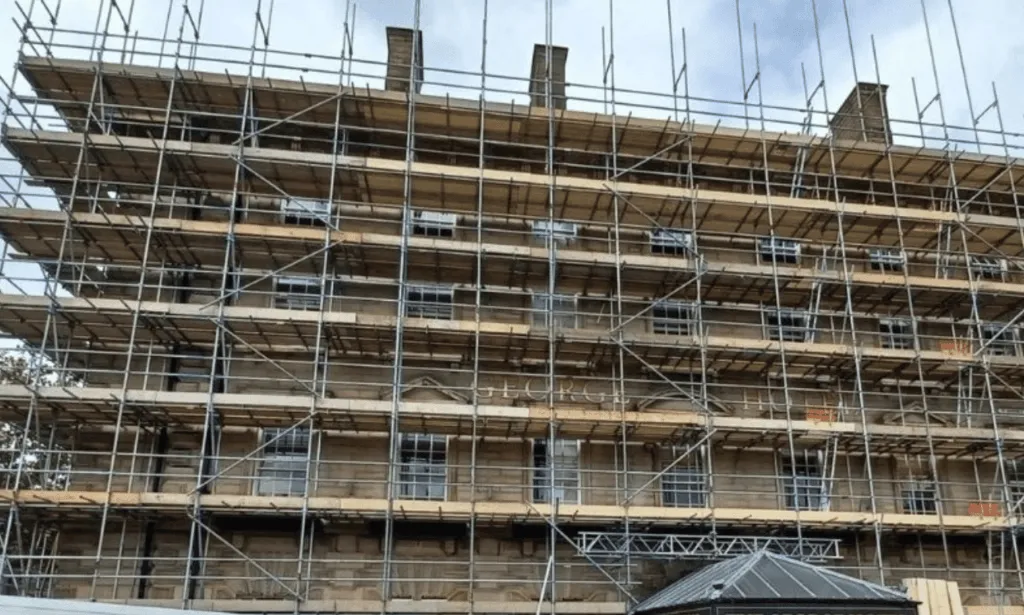
When working on demolition scaffolding, ensuring the safety of workers is paramount. Using the appropriate safety equipment not only protects workers from potential hazards but also safeguards their well-being throughout the project. Personal Protective Equipment (PPE) is crucial in providing the necessary protection against potential injuries and falls.
Personal Fall Arrest Systems and Guardrails
Workers at heights on demolition scaffolding should be equipped with personal fall arrest systems or guardrails to prevent falls and mitigate the risks associated with working at elevated levels. Personal fall arrest systems include harnesses and lanyards that securely hold the worker in the event of a fall, reducing the risk of serious injuries. Guardrails, on the other hand, create a protective barrier around the scaffolding platform, acting as a preventive measure to ensure worker safety.
Hard Hats and Non-Slip Footwear
Hard hats are essential safety equipment that must be worn by workers on demolition scaffolding. They are designed to protect the head from falling objects, debris, or any potential impacts that may occur during demolition operations. Non-slip footwear is equally important as it provides workers with the necessary grip and stability to navigate uneven or slippery surfaces, reducing the risk of slips, trips, and falls.
Using safety equipment, such as personal fall arrest systems, guardrails, hard hats, and non-slip footwear, is in line with safety regulations and best practices for worker protection. It ensures the well-being of workers on demolition scaffolding and contributes to a safer work environment.
| Safety Equipment | Function |
|---|---|
| Personal Fall Arrest Systems | Prevents falls by securing workers in the event of a fall. |
| Guardrails | Creates a protective barrier to prevent falls from the edge of the scaffolding. |
| Hard Hats | Protects the head from falling objects and potential impacts. |
| Non-Slip Footwear | Provides grip and stability on uneven or slippery surfaces. |
Load Limits and Building Guidelines for Demolition Scaffolding
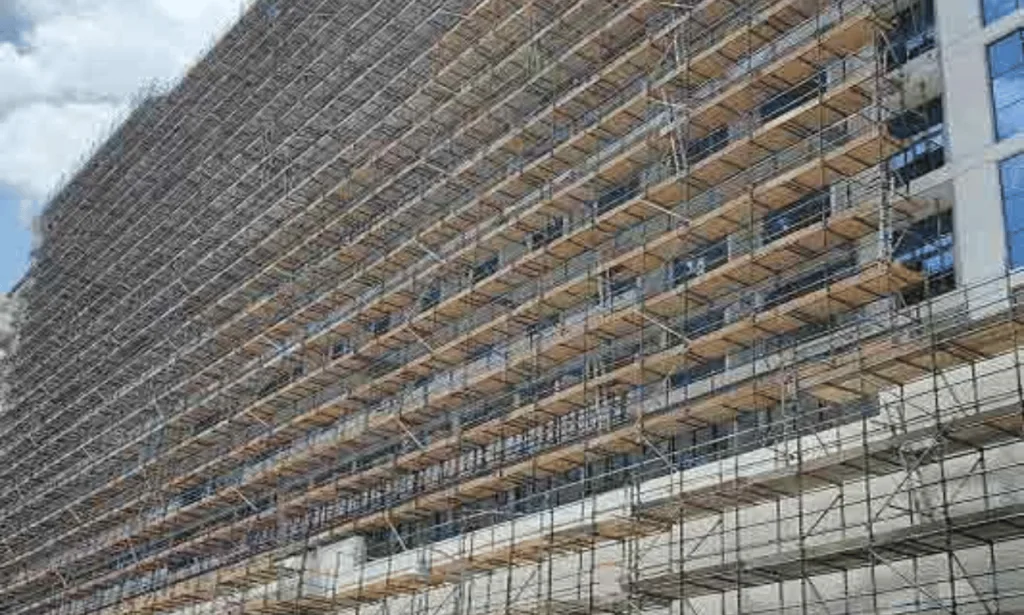
When it comes to demolition scaffolding, understanding load limits and following building guidelines is crucial for ensuring the safety and stability of the structure. Properly constructed scaffolding that adheres to load-bearing capacities and building regulations minimizes the risk of accidents and structural failures.
Load Limits and Scaffold Load-Bearing Capacities
Load limits refer to the maximum weight that a scaffold can safely support. The Occupational Safety and Health Administration (OSHA) mandates that scaffolds must be capable of supporting at least four times the maximum intended load without failure. This requirement ensures the structural integrity of the scaffold and provides a safety margin to accommodate unexpected loads or stress.
To determine the load-bearing capacity of a scaffold, it is essential to consider factors such as the type of scaffold, materials used in its construction, and the condition of its components. Manufacturers typically provide load capacity guidelines that should be strictly followed during scaffold assembly and use.
Building Guidelines and Precise Construction
Precise construction techniques and adherence to building guidelines are crucial for the safe and reliable performance of demolition scaffolding. Building guidelines outline the necessary steps for constructing scaffolds, ensuring proper support, stability, and load distribution.
When building scaffolds for demolition work, it is important to follow the manufacturer’s instructions carefully. This includes using compatible components and connectors, ensuring proper placement of cross braces and diagonal bracing, and securely attaching guardrails and toeboards.
Additionally, maintaining accurate plumb and level alignment prevents scaffold leaning or tilting, minimizing the risk of structural failure. Monitoring scaffold construction for any signs of cracking, breaking, or instability is essential before each shift to ensure worker safety.
Clearance from Power Lines and OSHA Regulations
When constructing demolition scaffolding, it is crucial to ensure sufficient clearance from power lines to prevent electrical hazards. OSHA mandates that scaffolds should maintain a minimum 10-foot distance from power lines unless measures such as insulating devices or de-energizing the lines are implemented.
OSHA regulations also emphasize the importance of supervision and inspection during scaffold construction. Having a competent person oversee the construction process and conduct visual inspections ensures that the scaffold is built correctly and meets safety standards.
Important Guidelines for Demolition Scaffolding Construction
| Guidelines | Explanation |
|---|---|
| Follow manufacturer’s instructions | Ensure proper assembly and use of scaffold components |
| Check for cracks, breaks, and instability | Inspect scaffold components before each shift |
| Maintain accurate plumb and level alignment | Prevent leaning or tilting of the scaffold structure |
| Ensure sufficient clearance from power lines | Prevent electrical hazards during scaffold construction |
| Supervise construction and conduct visual inspections | Ensure compliance with safety standards |
By following load limits and building guidelines, demolition scaffolding can provide a safe and reliable working platform for workers. Paying careful attention to load-bearing capacities, precise construction, and compliance with OSHA regulations ensures the integrity and stability of the scaffold, protecting workers from potential hazards and accidents.
Organizing the Work Area and Keeping it Clear
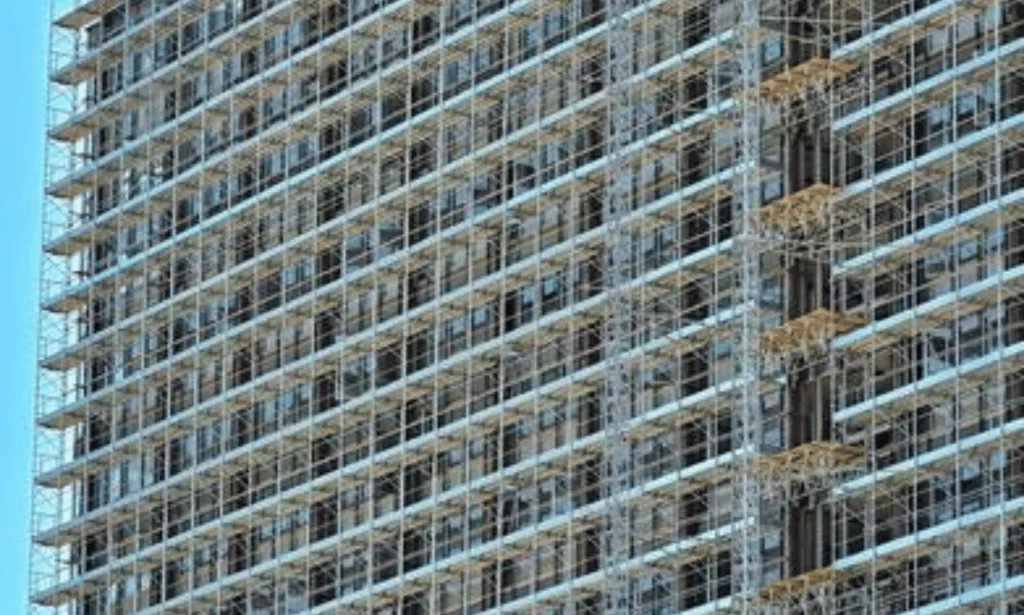
Maintaining an organized and clear work area is crucial for the safety and efficiency of demolition scaffolding operations. By implementing proper work area organization and clutter prevention measures, construction teams can minimize the risk of accidents and maximize productivity. This section explores key strategies for promoting a safe and organized work environment, including the use of barriers and ensuring vehicle and equipment clearance.
Work Area Organization
Work area organization is essential for preventing trip hazards, falls, and other accidents that can compromise worker safety. Proper storage and organization of tools and equipment reduce the risk of objects falling from scaffolds and causing injuries to workers on lower levels. Implementing designated storage areas and using clear labeling systems enable easy access to tools and materials, enhancing overall efficiency and reducing clutter. Workers should be trained on the importance of maintaining an organized work area and encouraged to actively participate in keeping the workspace orderly.
Clutter Prevention
Clutter prevention is a crucial aspect of work area organization. Construction debris, loose materials, and excessive waste can obstruct walkways and pose serious safety hazards. Regular cleanup and waste removal ensure a clear and unobstructed work area, reducing the risk of trips and falls. Implementing waste management systems, such as designated waste bins and disposal protocols, promotes a clean and clutter-free environment. Additionally, encouraging workers to clean up after completing tasks and providing regular guidance and supervision on clutter prevention contribute to a safer work environment.
Barriers
Setting up barriers is an effective way to maintain a clear and safe scaffold base. Barriers prevent vehicles and heavy equipment from entering the work area, mitigating the risk of accidents caused by collisions or interference with scaffolding structures. Well-placed barriers create a physical separation between the work area and any potential hazards, protecting both workers and the integrity of the scaffold. It is important to choose appropriate barriers based on the specific site conditions, ensuring they are sturdy, highly visible, and capable of withstanding external forces.
Vehicle and Equipment Clearance
Ensuring sufficient vehicle and equipment clearance is crucial for the safe operation of demolition scaffolding. Clear guidelines should be established to define the minimum distance required between the scaffold base and any vehicles or machinery. This prevents accidental contact between scaffolding components and eliminates the risk of damage or destabilization. Regular monitoring and enforcement of these clearance requirements contribute to a safer work environment and minimize the potential for accidents.
| Key Benefits of Organizing the Work Area: |
|---|
| 1. Reduced risk of trips and falls |
| 2. Increased productivity and efficiency |
| 3. Improved worker morale and satisfaction |
| 4. Enhanced overall safety on the job site |
Training and Education for Scaffolding Safety
Proper training and education are crucial for maintaining scaffolding safety during demolition work. Workers should undergo comprehensive training sessions that cover essential aspects such as hazard recognition, control measures, and the proper setup and handling of materials. By equipping workers with the necessary knowledge and skills, they can identify potential hazards and implement appropriate safety practices to mitigate risks.
During training, emphasis should be placed on the importance of recognizing hazards specific to scaffolding, such as unstable ground conditions, weather factors, and load requirements. Workers should also be educated on the proper use of control measures, including the erection and dismantling of scaffolds and the installation of guardrails and other safety features.
Knowledge of proper handling and positioning of materials is crucial for maintaining the stability and integrity of scaffolding structures. Workers should be trained on how to handle materials safely, ensuring that they are securely fastened and distributed evenly across the scaffold platform.
Ongoing training and supervision are essential for maintaining a safe working environment. Regular training refreshers should be conducted to reinforce safety practices and ensure that workers stay updated with the latest industry standards and regulations. Supervisors should provide guidance and support to workers, monitoring their adherence to safety protocols and addressing any concerns or issues that may arise.
Benefits of Worker Training and Education:
- Enhanced hazard recognition skills
- Effective implementation of control measures
- Proper handling and positioning of materials
- Improved safety practices and compliance
- Reduced risk of accidents and injuries
By prioritizing worker training and education, companies can create a culture of safety and ensure that all workers actively contribute to maintaining scaffolding safety on the job site.
Importance of Stability and Dismantling Procedures
When it comes to scaffold dismantling, maintaining stability is of utmost importance. It ensures the safety of workers and prevents accidents or injuries. By following proper dismantling procedures, such as the systematic removal of materials and organizing the dismantled scaffold components, you can ensure a smooth and secure dismantling process.
Dismantling a scaffold should be done in a tier-by-tier manner. This means that each tier should be completely removed before moving on to the next. By dismantling the scaffold tier by tier, you minimize the risk of instability and ensure a controlled dismantling process. It allows you to maintain balance and stability throughout the dismantling process, reducing the chances of accidents.
During the dismantling process, it is essential to handle the scaffold components with care. **Components should not be thrown or dropped to the ground**. Instead, they should be passed down from person to person or lowered using a rope system or hoist. This helps prevent damage to the scaffold components and ensures the safety of workers on the ground.
Once the scaffold has been dismantled, safe storage and proper stacking of the dismantled materials are crucial. This allows for easy access and retrieval when needed in the future or for transportation to another location. By storing the dismantled scaffold materials properly, you can prevent damage and ensure their longevity.
Remember, scaffold stability and proper dismantling procedures are essential for the safety of both workers and the overall success of your project. By following these guidelines and prioritizing safety, you can ensure a smooth and secure dismantling process.
| Benefits of Scaffold Stability and Proper Dismantling Procedures |
|---|
| Minimizes the risk of accidents and injuries during dismantling |
| Ensures a controlled and systematic dismantling process |
| Reduces the chances of scaffold instability |
| Prevents damage to scaffold components |
| Facilitates easy access and retrieval of dismantled materials |
| Ensures the longevity and usability of the dismantled scaffold materials |
Conclusion
In conclusion, when it comes to demolition work, ensuring the safety of workers is of utmost importance. Demolition scaffolding provides a secure and stable working platform, and by following essential safety tips and guidelines, workers can protect themselves and perform their tasks efficiently.
Choosing the right type of scaffold, using proper safety equipment, maintaining load limits, and complying with regulations are vital for worker protection. Additionally, providing training and education to workers on scaffold safety practices is fundamental in preventing accidents and injuries.
Furthermore, adhering to dismantling procedures, such as removing materials tier by tier and safely storing dismantled scaffold components, is crucial in maintaining scaffold stability and preventing accidents during the dismantling process.
By prioritizing safety in demolition scaffolding, workers can ensure a successful and secure demolition operation, while complying with regulations, protecting themselves, and promoting a safe working environment.
FAQ
What are the different types of scaffolds used in demolition work?
The different types of scaffolds used in demolition work include supported, suspended, rolling, cantilever, steel, H-frame, and trestle scaffolding. Each type is suitable for specific demolition tasks, considering factors such as access requirements and the building’s design.
What are the components of demolition scaffolds?
Demolition scaffolds consist of standards, ledgers, braces, platforms, and guardrails. Standards are vertical members that support the scaffold’s weight, while ledgers connect the standards and provide lateral stability. Braces are diagonal members that offer additional stability, and platforms are the working surfaces where workers stand. Guardrails consist of top rails, mid rails, and toeboards, preventing falls and ensuring worker safety.
What are the safety requirements and regulations for demolition scaffolds?
Demolition scaffolds must comply with safety requirements and regulations to protect workers and the public. Design and construction should consider the nature of the demolition work, building design, load capacity, and access requirements. Regular inspections and maintenance by qualified individuals are necessary to ensure scaffolds remain safe and free from defects. Workers using scaffolding for demolition work must receive proper training and supervision, covering safe erection, dismantling, and use of scaffolds.
What safety equipment should be used for demolition scaffolding?
Personal protective equipment (PPE) is necessary for workers at heights, including personal fall arrest systems or guardrails. Hard hats and non-slip footwear should be worn to prevent serious injuries from falling objects or slips. PPE should be used according to safety regulations and best practices to ensure worker protection.
What are the load limits and building guidelines for demolition scaffolding?
Demolition scaffolding has specific load-bearing capacities, and OSHA mandates that scaffolds support four times the maximum intended load without failure. Following precise construction guidelines is crucial to prevent cracking, breaking, or collapsing of the scaffold components. It is essential to build scaffolds according to the manufacturer’s instructions, ensuring sufficient clearance from power lines and supervising the construction and visual inspection of the scaffold before each shift.
How should the work area be organized and kept clear for demolition scaffolding?
Maintaining an organized and clear work area is essential for the safety of demolition scaffolding. Tools and equipment should be properly organized and stored to prevent trip hazards and falls. Barriers should be set up to keep the scaffold base clear of vehicles and heavy equipment that could cause accidents. A clutter-free work area enhances worker safety and prevents hazards for workers on lower levels.
What training and education are necessary for scaffolding safety during demolition work?
Proper training and education are key to ensuring scaffolding safety during demolition work. Workers should receive training on hazard recognition, control measures, and the proper setup and handling of materials. They should be aware of the intended load and type of scaffold being used. Ongoing training and supervision are essential to maintain a safe working environment and prevent accidents or injuries.
Why is stability and proper dismantling important in demolition scaffolding?
Scaffold stability is crucial during the dismantling process. Following proper dismantling procedures, such as the removal of materials and organizing the dismantled scaffold components, ensures safety. Dismantling should be done tier by tier, with each tier completely removed before moving to the next. Components should not be thrown or dropped to the ground, but rather passed down from person to person or lowered using a rope system or hoist. Safe storage and proper stacking of dismantled scaffolding materials are important for future use or transportation.

